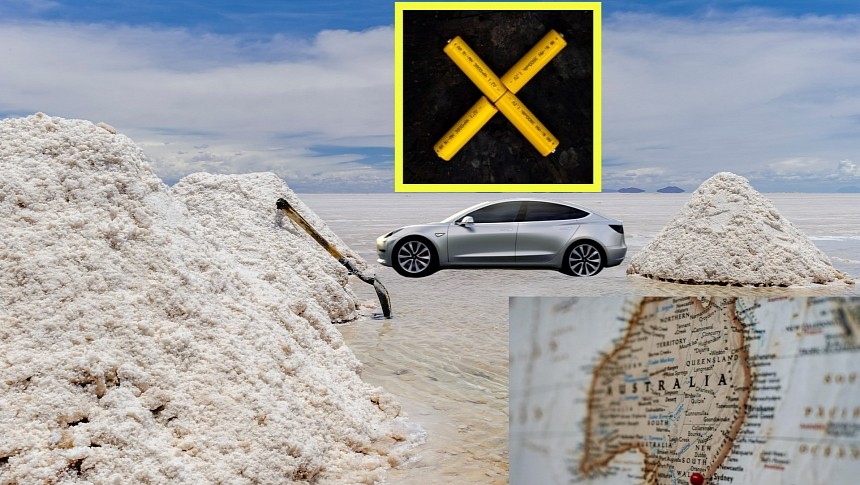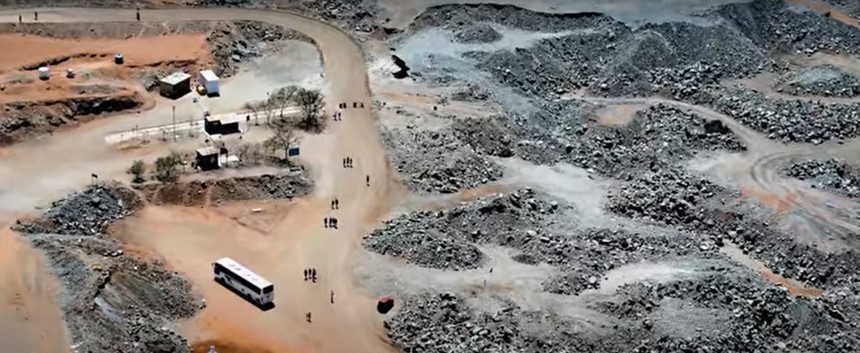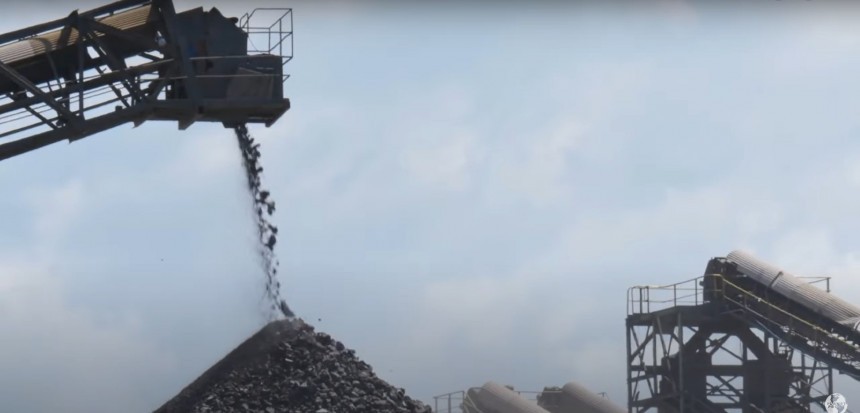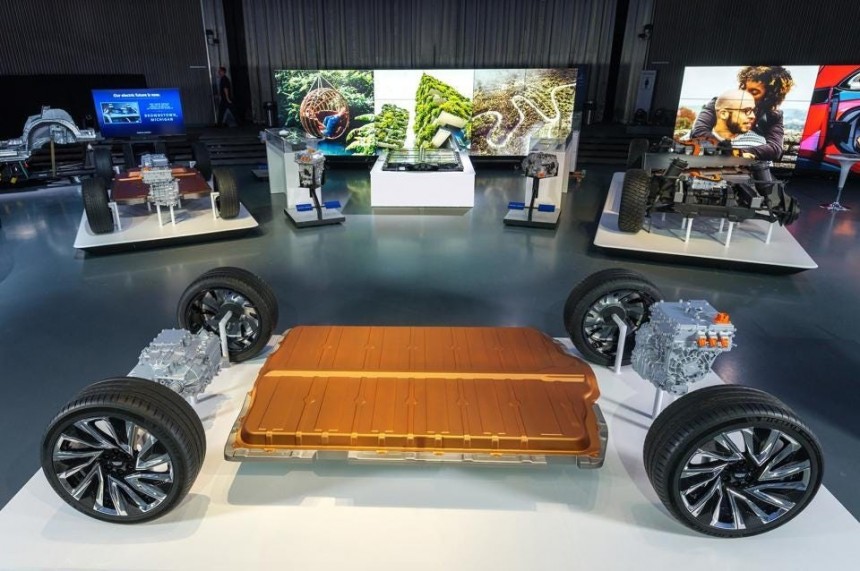Even though the main talking points regarding battery-electric vehicles (BEVs) do not include the environment as much as before, the topic remains important for manufacturers and customers. But why can't Australia – the world's largest lithium producer – help them? Let's dive in.
Today, road transport is one of the biggest contributors to climate change. The Environmental Protection Agency (EPA) even points out that light-duty vehicles (with a gross vehicle weight rating of under 8,500 lb) generate the biggest carbon footprint within the transportation sector. But that's not just the US saying so. The EU also agrees with this assessment.
That's one of the reasons why BEVs became extremely important and why governments worldwide began incentivizing and subsidizing their existence. Moreover, Tesla's massive success prompted legacy automakers to follow suit because these zero-tailpipe emission vehicles are simply better from a non-gearhead point of view. If the skateboard architecture and the software work as they should, the BEV becomes an excellent commuting appliance.
Unfortunately, multiple analyses revealed that BEVs aren't as clean as we would want them. The manufacturing process of each unit takes a severe toll on the environment. That's mainly because of global mining and complicated supply chains. The good news, however, is that a BEV will be less of a burden on the environment the longer it stays in operation. A report claimed that 21,000 miles (33,796 kilometers) are enough to equalize the carbon footprint of a BEV with that of an internal combustion engine (ICE) vehicle.
From there on out, the ICE keeps producing exhaust fumes and, as an inevitable consequence, keeps growing its negative impact on the climate. A BEV will not. Unless it needs a new high-voltage battery pack, of course.
So, why is Australia to blame for not helping BEVs leave the factory with a reduced carbon footprint? The simple answer is – spodumene. But let's see what's exactly going on.
Since legacy carmakers are rushing to introduce more and more BEVs, and the world's best-selling vehicle in the first quarter of 2023 was the Model Y crossover SUV, there's little to no chance that demand for lithium will drop. Analysts estimate that we will need millions of tons well after 2030. That may seem absurd, considering how badly environmentalists view mining. Still, when looking at a country like China, where BEV sales nearly doubled in just one year, the dominoes quickly start falling into place. It becomes especially clear as we discover that only 5.6% of the US car market comprised BEVs in 2022. There's a lot of room for growth.
The high ex-factory carbon footprint of a BEV will remain an issue for most manufacturers (and regulators alike), even though some (like BMW, for example) are trying to minimize the impact of the production process using sustainable materials and by implementing aspects of the circular economy. That's because of how Australia obtains its lithium. The country is betting on quadrupling the lithium-ion battery market by 2030 and is heavily invested in getting lithium out of a rock known as spodumene.
Lithium aluminum inosilicate is the primary "ingredient" found in the very colorful mineral known as spodumene. Seven steps are required to extract the lithium from it. The spodumene has to be crushed and grounded, roasted, put through a sulfuric acid treatment, filtrated, purified, and combined with sodium carbonate to bring out the lithium carbonate. The last part of the process sets the lithium carbonate into large pools. That's where the precipitation process turns it into lithium salts or other products such as lithium chloride.
We don't know how much the U.S. produces because USGS claims it must keep the figures a secret not to disclose proprietary information. But you can learn what America's doing by looking at Thacker Pass, where General Motors is already involved.
But what Australia does is it sends the spodumene concentrate to China. The country only processes it partially at home. Australia stops at the fourth step of the production process. It's filtrated and dried, then packaged and shipped to China.
The Asian country may have invested in renewable energy, but its electricity grid is powered mainly by coal, which has a big carbon footprint. Burning coal pollutes our atmosphere because of emissions such as sulfur dioxide, nitrogen oxides, and other dangerous particulates that contribute to smog and respiratory issues. Australia is no different from this, so using "dirty" electricity remains a big issue.
In comparison, Chile's 30% share of the global lithium supply is not as carbon intensive because the powdery metal is obtained from brine. Although there are worries regarding using fresh water, the South American country's electricity grid is not as important – just 6% of the emissions are associated with the production process. In comparison, Australia's and China's carbon emissions associated with making lithium can go over 50% when considering just the electricity needed.
Sadly, things won't change soon because a Benchmark Minerals analysis revealed that hard rock lithium sources remain popular. Over 60% of the metal used in batteries is mined from rocks and transported from one country to another to become what battery manufacturers need.
It remains to be seen if sacrificing Thacker Pass and incentivizing battery makers to build new plants in the U.S. will help bring down the initial emissions of a BEV made in North America.
That's one of the reasons why BEVs became extremely important and why governments worldwide began incentivizing and subsidizing their existence. Moreover, Tesla's massive success prompted legacy automakers to follow suit because these zero-tailpipe emission vehicles are simply better from a non-gearhead point of view. If the skateboard architecture and the software work as they should, the BEV becomes an excellent commuting appliance.
Unfortunately, multiple analyses revealed that BEVs aren't as clean as we would want them. The manufacturing process of each unit takes a severe toll on the environment. That's mainly because of global mining and complicated supply chains. The good news, however, is that a BEV will be less of a burden on the environment the longer it stays in operation. A report claimed that 21,000 miles (33,796 kilometers) are enough to equalize the carbon footprint of a BEV with that of an internal combustion engine (ICE) vehicle.
From there on out, the ICE keeps producing exhaust fumes and, as an inevitable consequence, keeps growing its negative impact on the climate. A BEV will not. Unless it needs a new high-voltage battery pack, of course.
Digging for the truth
Based on data from the United States Geological Survey (USGS), Australia has nearly 47% of the total lithium supply market. Also known as white gold, lithium is a silvery metal used in vehicle batteries. Be it an all-electric automobile or a plug-in hybrid one, chances are you will find such an energy storage unit somewhere in your car. They're also in your smartphone, laptop, tablet, and other similar devices or backup energy storage solutions. Lithium is very popular, and its demand will not drop until a safe and reliable alternative is presented. Lithium-free sodium-ion (salt-based) batteries have recently been put on some small vehicles, and solid-state batteries (SSBs) are still four or five years away from reaching mass-market cars.Since legacy carmakers are rushing to introduce more and more BEVs, and the world's best-selling vehicle in the first quarter of 2023 was the Model Y crossover SUV, there's little to no chance that demand for lithium will drop. Analysts estimate that we will need millions of tons well after 2030. That may seem absurd, considering how badly environmentalists view mining. Still, when looking at a country like China, where BEV sales nearly doubled in just one year, the dominoes quickly start falling into place. It becomes especially clear as we discover that only 5.6% of the US car market comprised BEVs in 2022. There's a lot of room for growth.
The high ex-factory carbon footprint of a BEV will remain an issue for most manufacturers (and regulators alike), even though some (like BMW, for example) are trying to minimize the impact of the production process using sustainable materials and by implementing aspects of the circular economy. That's because of how Australia obtains its lithium. The country is betting on quadrupling the lithium-ion battery market by 2030 and is heavily invested in getting lithium out of a rock known as spodumene.
Is there an upside?
The two good things about spodumene are that it contains a lot of lithium, allowing the harvesting process to go faster. Unfortunately, the steps needed to obtain white gold are three times more carbon intensive than sourcing lithium from brine. That's what Chile, China, and Argentina are doing. Together, these three countries slightly overcome Australia's share of the lithium production market.We don't know how much the U.S. produces because USGS claims it must keep the figures a secret not to disclose proprietary information. But you can learn what America's doing by looking at Thacker Pass, where General Motors is already involved.
But what Australia does is it sends the spodumene concentrate to China. The country only processes it partially at home. Australia stops at the fourth step of the production process. It's filtrated and dried, then packaged and shipped to China.
A vicious circle
It's also worth noting that China is the world's most prolific lithium refiner, home to six of the top 10 largest battery makers. The use of coal-fired electricity extends beyond the lithium production process and contributes to BEVs coming out of the factory with a substantial initial carbon footprint.In comparison, Chile's 30% share of the global lithium supply is not as carbon intensive because the powdery metal is obtained from brine. Although there are worries regarding using fresh water, the South American country's electricity grid is not as important – just 6% of the emissions are associated with the production process. In comparison, Australia's and China's carbon emissions associated with making lithium can go over 50% when considering just the electricity needed.
Sadly, things won't change soon because a Benchmark Minerals analysis revealed that hard rock lithium sources remain popular. Over 60% of the metal used in batteries is mined from rocks and transported from one country to another to become what battery manufacturers need.
It remains to be seen if sacrificing Thacker Pass and incentivizing battery makers to build new plants in the U.S. will help bring down the initial emissions of a BEV made in North America.















